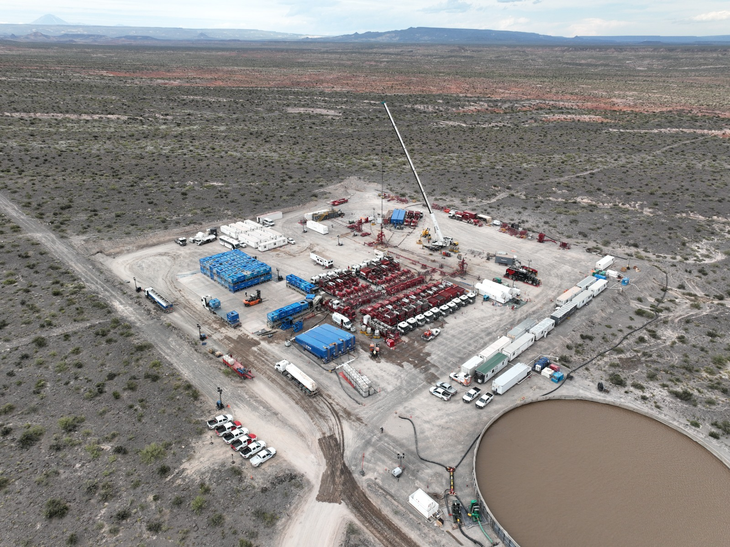It is an economic phenomenon that can lead a country rich in natural resources to a situation of deindustrialization and dependence. This leads to unstable economic growth if adequate precautions are not taken to diversify the economy.
One of the most listened to in the city, analyzed in its latest report the evolution of Argentine assets that extended their rally these days: the S&P Merval is at historical highs in dollars and sovereign debt rose 94%. In his report, he stated that, “if everything goes well, we will have all the symptoms of the Dutch disease.”
The content you want to access is exclusive to subscribers.
What the 1816 Consulting report alleges is an economic phenomenon that refers to the adverse effects that the discovery of natural resources (such as oil or minerals) can have. about the economy of a country. This term originated in the Netherlands in the 1960s, when the discovery of large reserves of natural gas in the North Sea sparked a boom in the energy sector, but it also caused economic damage in other areas.


In this regard, 1816 points out: “if everything goes well, we are going to have all the symptoms of the Dutch disease (with very winning sectors and very losing sectors), but that should not be seen as something bad: it will, in any case, be a question of managing abundance”.
And he adds: “Having said all this, as the long term is a succession of short terms, we must not lose sight of how crucial the 2025 election is, with a very uncertain outcome.”
The Dutch disease
Dutch disease describes a situation in which a country experiences strong growth in one sector due to the exploitation of natural resources, but this boom entails an appreciation of the local currency, causing other sectors of the economy, such as manufacturing and exports not related to natural resources, become less competitive in international markets. This can lead to deindustrialization and, in the long term, a dangerous dependence on natural resources.
YPF Vaca Muerta Mendoza

To counter currency appreciation, some countries implement policies to stabilize their exchange rate or restrict overvaluation of their local currency.
Features and consequences
- Currency appreciation: The increase in income from exports of natural resources (such as oil, gas, minerals) leads to greater demand for the local currency, which causes its appreciation. This makes the country’s exports of other products more expensive and reduces the competitiveness of industries not related to natural resources.
- Deindustrialization: With the local currency more expensive, the country’s manufacturing industries may suffer a drop in demand for their products abroad. This can lead to a decline in production and employment in key sectors of the economy that do not depend on natural resources.
- Dependence on natural resources: The boom in the natural resources sector can generate a false sense of wealth and encourage excessive dependence on these resources. When resource prices fall or demand decreases, the economy can be severely affected as other productive sectors have not been developed.
- Internal inflation: Increased income from natural resources can lead to greater demand for goods and services within the country, which can lead to inflationary pressures. This, in turn, affects the purchasing power of consumers.
- Economic inefficiencies: Resources are concentrated in the extractive sector and this can lead to their inefficient allocation, since investments in other sectors of the economy may decrease, limiting economic diversification.
Some historical examples
As mentioned in the first lines of this note, the term “dutch disease” emerged when, in the 1960s, the Netherlands discovered large deposits of natural gas in the North Sea. This caused a boom in the energy sector, but it also led to an appreciation of the florin (the local currency at the time), which negatively affected other sectors such as manufacturing and agriculture.
Another closer example is Venezuela. Over the decades, the Caribbean country experienced a modern form of Dutch disease due to its dependence on oil. The boom in oil prices in the 2000s gave the economy a temporary respite, but by not diversifying it, The fall in oil prices in later years left the country in a deep economic crisis.
Something similar happened in Nigeria, another example of a country rich in natural resources, which suffered the consequences of the Dutch disease due to its dependence on oil. The growth of the energy sector affected the development of other productive sectors, leaving the economy vulnerable to fluctuations in the price of crude oil.
Source: Ambito
I am a 24-year-old writer and journalist who has been working in the news industry for the past two years. I write primarily about market news, so if you’re looking for insights into what’s going on in the stock market or economic indicators, you’ve come to the right place. I also dabble in writing articles on lifestyle trends and pop culture news.




